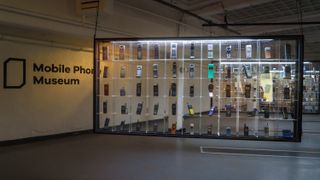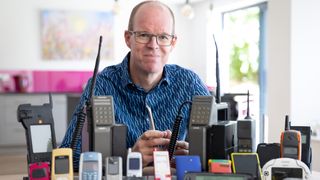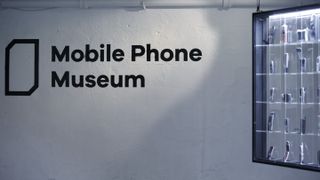Why the Mobile Phone Museum's mission is to preserve the history of handsets
Mobile Phone Museum co-founder Ben Wood explains why handsets are worth documenting

The 2022 Mobile Industry Awards (MIAs) will celebrate the people, the organisations, and the innovations that have made it yet another year to remember for the world of mobility. It’s also the event’s twentieth anniversary, and it’s fair to say a lot has changed since 2002.
The past two decades have seen the mobile phone transform from a device that can make calls, send texts, and play Snake into pocket-sized computers that are an essential companion for everyday life.
But the history of the mobile phone goes back much further – the first mobile phone call was made in 1985 and the first SMS text message was sent in 1992. This means the UK industry is nearing its fortieth birthday, during which time a lot of devices have been manufactured, bought, and abandoned.
The Mobile Phone Museum
Technology is characterised by constant change, and it is only natural that consumers are attracted to the newest, flashiest products on the shelves. Devices that are deemed obsolete are often shoved inside a drawer, gathering dust, never to be thought of again.
But as the mobile industry matures, its legacy becomes even more important. The mobile phone is the most dominant consumer electronic category in the world, subsuming the camera, camcorder, Dictaphone, music player, torch, compass, wallet, watch, calculator, alarm clock, and arguably for some people the personal computer.
This evolution didn’t just happen overnight. There is a long history of innovation in feature sets and design that is worth documenting and preserving – and that’s where the Mobile Phone Museum comes in.

Founder and co-curator Ben Wood has worked in the industry since a spell at Vodafone in the 1990s and currently as an analyst for CCS Insight. His first mobile phone was the Nokia 2110, famous for introducing the softkey, the first entry in what would become a significant collection.
Are you a pro? Subscribe to our newsletter
Sign up to the TechRadar Pro newsletter to get all the top news, opinion, features and guidance your business needs to succeed!
Wood, believing that mobile phones were important social history icons that needed to be saved. Initially he amassed a significant personal collection – spending significant time and money in places like eBay – before deciding to take things to the next step with the launch of the museum.
“I joined forces with Matt Chatterley (a long-time industry friend and director of devices at BT) who had a great collection and then Kamil Vacek who is a philanthropist from the Czech Republic,” Wood tells TechRadar Pro. “He got us the website built, and then we arranged a five-year deal with Vodafone, which will be celebrating the 40th anniversary of the first mobile call on its network in 2025. It was all very serendipitous.”
This union didn’t just provide Wood with greater resources to purchase new devices, but also drove significant awareness of the project. When the Mobile Phone Museum launched last November with a physical event in London, it had 2,000 unique devices in its collection, a figure which has now risen to 2,471 at the time of writing, with 250 individuals making donations. In total, the museum has more than 5,000 devices when duplicates are taken into account.
“There is no ambition to have every phone in the world – that is ridiculous,” he says. “There must have been tens of thousands of phones that have been made … But I honestly think you can describe it as the most extensive collection of mobile phones in the world.
“I think it’s a realistic expectation that within the next six months we could have 3,000 unique devices at which point we might have a chance of getting into the Guinness Book of World Records.
Searching for the holy grail
The museum has devices from across the world, including Europe, North America, and Asia, but admits things are a little ‘GSM-centric’ at present, which is perhaps unsurprising given its origins are founded in personal collections largely amassed in Europe. Wood would like to globalise the collection even further, acquiring more handsets from places like Japan and South Korea which often had vastly different mobile phones to the rest of the world in the mid-2000s.
The fact that so many people are willing to trust the museum with what can occasionally be very valuable or rare artefacts is testament to Wood and his co-curators’ vision. The museum currently has a ‘most wanted’ list of rare handsets that it wants to get into its collection, such as the Pepsi P1 or the modular Google Project Ara, and since launch it has managed to get its hands on some of the most coveted.
This includes the Motorola Aura Diamond – a diamond encrusted handset launched in 2009 that cost more than $5,500 at the time.
“The fact that someone has that much faith in the project gives me a warm feeling in my heart,” Wood says. “They know this is a valuable device and they know it’s going to be safeguarded by us.
“Another ‘holy grail’ was the Nokia N950 which was a product that never actually made it to market.”

Ultimate ambition
Wood’s interest is firmly in devices from what he calls the ‘golden era’ from 1985 to 2007 during which there was a huge variation in form factors and gimmicks. Although he is full of appreciation for the capabilities of modern smartphone, he laments the lack of experimentation.
“The moment Steve Jobs walked on stage and pulled the iPhone out of his pocket, things get a little bit boring,” he says, nothing that most modern handsets subscribe to the same design principles.
“However, there are some glimmers of hope with foldables which are bringing a little bit more design diversity back into the mobile phone.”
Getting hold of more modern devices should be easier and Wood has touted a model where manufacturers make a donation each time they produce a new device, a bit like when an author provides a copy of their book to the British Library after publication. However, as the collection isn’t designed to be exhaustive, he believes there is a need for some selectivity, admitting only the most iconic and important devices.
The museum is currently online only, partly because it is the best use of the organisation’s resources but also because it increases accessibility, with anyone around the world able to get lost down rabbit holes of exploration through its pages. However, there is still a lot of work to do in digitising the collection and create entries for everything in the catalogue.
“Of the 2,471 phones in our collection only 550 have photographs,” Wood explains. “It costs about £30 to professionally photograph each phone. It’s expensive but it means we’ve often got better imagery of the devices than then they launched! I wish we could find the money to do it for all our devices.”
Wood is convinced that the online model works but admits the ultimate ambition is to have a physical exhibition in time for the fortieth anniversary of the first phone call in 2025 at a “signature venue” like the Design Museum, the Science Museum, or the Victoria & Albert (V&A) Museum.
The next event on the calendar is the 2022 MIAs in London this week, at which guests will be invited to donate or recycle their old devices.
“This could be the event that takes our collection above 2,500,” suggests Wood.
Also important is the education element of the project, with the museum going into schools to inspire future engineers and designers and to illustrate the positive elements of mobility amidst wider concerns about safety, bullying and cybersecurity.
“The mobile phone is the most prolific consumer device on the planet, and they are now increasingly nostalgic items,” he says.
“Phones sometimes have a bad reputation, but we can come in and talk about the unbelievable design and technology story and how the UK has been a pioneer in the field. It’s quite exciting to explain to people why mobile phones are a force for good.
- Here are the best mobile phone deals around today
Steve McCaskill is TechRadar Pro's resident mobile industry expert, covering all aspects of the UK and global news, from operators to service providers and everything in between. He is a former editor of Silicon UK and journalist with over a decade's experience in the technology industry, writing about technology, in particular, telecoms, mobile and sports tech, sports, video games and media.
Most Popular



